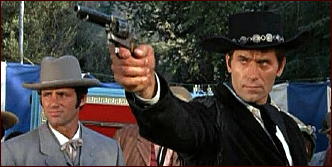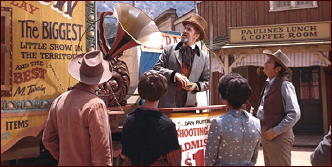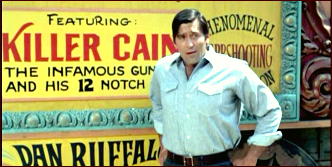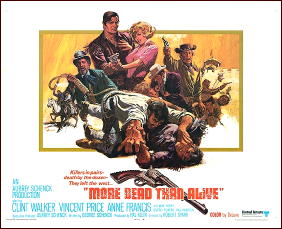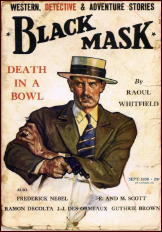Sat 6 Feb 2016
A TV Series Review by Michael Shonk: QUEEN OF SWORDS (2000-2001).
Posted by Steve under Reviews , TV Adventure[6] Comments
by Michael Shonk
QUEEN OF SWORDS. Syndicated, 2000-2001. 22 episodes @ 60 minutes. Fireworks Entertainment (Canada)/ Global-Can West Company (Canada)/ Telefonica Media (Spain)/ Morena Films (Spain)/ Amy International (UK)/ M6 (France)/ Antena 3 (Spain). Tessie Santiago as Marie Teresa Alvarado. Anthony Lemke as Captain Marcus Grisham, Elsa Pataka as Vera Hidalgo. Peter Wingfield as Dr. Robert Helm, Paulina Galvez as Marta, Valentine Pelka as Colonel Luis Montoya, and Tacho Gonzalez as Don Gasper Hidalgo.
Executive Producers: David Abramowitz, Jay Firestone and Adam Haight. Co-Executive Producers: Simon MacCorkindale, Ira Bernstein, Alvaro Longoria and Juan Gordon. Supervising Producers: James Thorpe, Steve Roberts. Producers: Ken Gord, Troy Thatcher. Line Producer: Gerard Croce. Distributed in U.S. by Paramount Domestic Television in association with Mercury Entertainment (U.S.). Distributed internationally by Fireworks International.
An oversimplified description of Queen of Swords would be Xena meets Zorro. Fortunately for TV producers an original premise is not required for entertaining television.
A female Zorro was nothing new and the success of Xena: Warrior Princess (1995-2001) had lead to more series featuring female action heroes. Series such as Relic Hunter (1999-2002), Sheena (2000-2002), and Queen of Swords attempted but failed to duplicate Xena’s success in syndication.
The opening episode “Destiny†sets up the premise and characters not unlike the usual origin story of Zorro.
“DESTINY.” 10/7/00. Written by James Thorpe Directed by Jon Cassar. Guest Cast: Enrique Rodriguez, Anthony De Longis and Teresa Del Olmo. *** It is 1817. While at school in Spain Tessa Alvarado learns of her father’s death back in Spanish California. She returns home to find her family Hacienda in ruins and about to be taken over by the ruthless power hungry Alcalde, Colonel Montoya. Times have changed since Tessa left Santa Helena.
All of her family gone, the family servants reduced to stealing to eat, Tessa must find a way to save her home. A visit from the ghost of her father who had been murdered by leader of the guards Captain Grisham gives Tessa the courage to take up the blade against Montoya and his men, her mask comes from her dead mother’s shawl and her name Queen of Swords comes from the tarot card revealed by her female companion, the gypsy Marta.
Swordmaster, stunt coordinator and actor Anthony De Longis (Highlander – the Series) wrote an online diary about his time working on Queen of Swords including the episode ‘Destiny.â€
De Longis writing is a researcher’s dream. His attention to the smallest details gives incredible insight to life working for the second unit on a syndicated action series of its era. He discusses some of the series pre-production work such as the two months star Tessie Santiago had to learn how to ride a horse and use a sword, rapier, dagger and whip.
De Longis shares what it was like on location in Texas-Hollywood, Spain. He reveals bits of information such as each episode was filmed in seven days, why the soldiers’ uniforms were changed from red pants to blue (the red looked “too operaâ€), how stunts were performed and even the name of the horses including credits (The Queen’s main horse was Chico, Captain Grisham rode Montero the same horse Russell Crowe rode in Gladiator.)
He also explained why the first episode to air “Destiny†was the third episode filmed (after “Death To The Queen†and “Vengeanceâ€). It was so the multinational cast and crew could get experience working together before filming the origin story. It was a wise idea as “Destiny†sets the style and tone of the series well.
Production values on Queen of Swords were high with better writing and direction than usual for syndicated TV series of the time. The acting was professional but nothing special. For more information about the cast visit here and those interested can find interviews with Tessie Santiago and Anthony Lemke here.
The characters were simple and one dimensional with the good guys likable and the bad guys always worthy of booing. But for a heroic action adventure series such as Queen of Swords characters with little depth is a good thing.
On the side of good was young beautiful Dona Maria Teresa “Tessa†Alvarado. In the tradition of too many heroes to name Tessa poses as a rich self absorbed Dona in the eyes of others while secretly donning the mask to fight for justice as the Queen of Swords. Her best friend/servant/companion since her childhood schooldays in Spain was Marta. Marta was a gypsy with mystical powers and the only one to know the identity of The Queen (of Swords).
The villains were lead by the ruthless Colonel Montoya. Obsessed with his quest for riches and power, Montoya used any means necessary to get his way. He blackmailed his second in command Captain Grisham. Grisham was still wanted as an Army deserter who had escaped execution during the War of 1812. Grisham was the lover of the wife of Don Hidalgo.
Senora Vera Hidalgo had married her husband for money. The young beautiful shallow woman enjoyed the excitement of cheating on her husband and playing spy for Grisham. The weak and cowardly Don Hidalgo represented the landowners in their dealings with Colonel Montoya.
Trying not to take sides was the handsome brave Dr. Robert Helm. Haunted by his time serving in the British army as a soldier during the Napoleonic Wars Helm had become a Doctor dedicated to saving lives. A possible love interest for Tessa/The Queen but the Doctor disliked Tessa for her spoiled nature and the Queen for her use of violence.
“THE PACT.” 1/27/01. Written by Elizabeth Keyishian. Directed by Carlos Gil. Guest Cast: Jose Conde, Patrick Medioni and Pablo Scola. *** Vera tells Captain Grisham that the Dons have hidden a treasure from the greedy hands of Colonel Montoya. Rather than report it Grisham decides to find it for himself.
“TAKES A THIEF.” 5/12/01. Written by Elizabeth Keyishian. Directed by Paolo Barzman. Guest Cast: Darren Tighe, Ralf Moller and Miglen Mirtchev. *** Two thieves – a strongman and a conman – pass through town and learning of the reward offered for The Queen of Swords decide to capture her. When the Queen saves the life of strongman Roman he refuses to help his partner continue to try to capture the Queen. A romance develops between Roman and Tessa’s companion Maria.
Queen of Swords was everything it wanted to be – a well produced, entertaining heroic action adventure. The series deserved a better fate.
So what happened to the series? Why did it last just one season? The audience was loyal but small. The many Xena inspired syndicated series available at the time made it difficult for any one to stand out among the crowd. And the premise had begun to fade in popularity. Xena: Warrior Princess would end, as Queen of Swords, in 2001. Relic Hunter and Sheena would follow the next season.
A peek at the credits above shows Queen of Swords was a multinational project. This allowed for bigger budgets, different locations than the American audience was used to, and advantages in the global market.
The project began with Fireworks Entertainment (owned at the time by Global Can West). Fireworks Entertainment was a successful syndication company having produced such series as Gene Roddenberry’s Andromeda, La Femme Nikita, and Relic Hunter.
Besides the normal costs of producing a TV series, Queen of Swords had the added financial burden of fighting two lawsuits. One was from Sony Pictures over the film rights to Zorro. In November 2001 the court ruled against Sony citing the Zorro character and Douglas Fairbanks copyright for film rights had expired and the character was in public domain.
However, by then Queen of Swords had ended with the last episode airing May 30, 2001. Fireworks had moved on to its next project that premiered in syndication October 6, 2001 – Marvel’s Mutant X. (Fireworks would be sued by Fox claiming it had film rights to Marvel.)
August 2000 writer Linda S. Lukens sued the series and creator-executive producer David Abramowitz (Jake and the Fatman, Highlander – the Series) claiming the series was based on a script she had written and sold to ABC when the two were with the same literary agency. Unlike Sony she won. In October 2000 Los Angeles Superior court Judge ordered the series to add an on screen credit for Lukens as series creator.
Apparently Lukens received credit on the series version shown in the United States (starting with the second episode) but did not receive credit on the versions shown in other countries such as Japan and France. The episodes shown on YouTube have no credit for “created by.”
Nothing about Queen of Swords is simple except the plots and characters. The Queen of Swords fan website The Presidio added another name to those responsible for the series creation. It claims Queen co-executive producer Ira Bernstein (Relic Hunter) developed the series and sites producer Ken Gord (Highlander – the Series, Relic Hunter) as its source.
Finally, for even more details and information about the series and its availability on home media (no DVD Region 1) I recommend the better than average Wikipedia page devoted to Queen of Swords.
